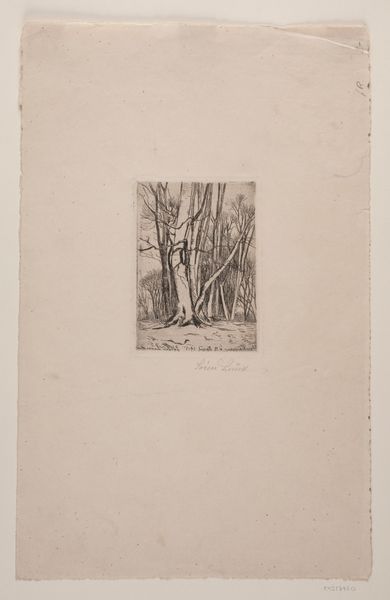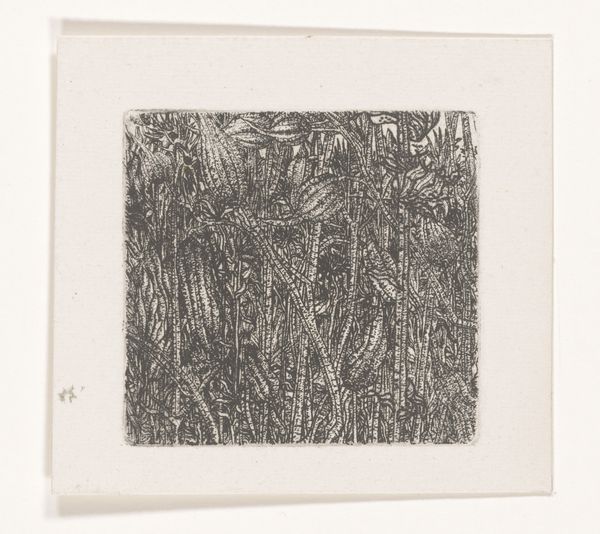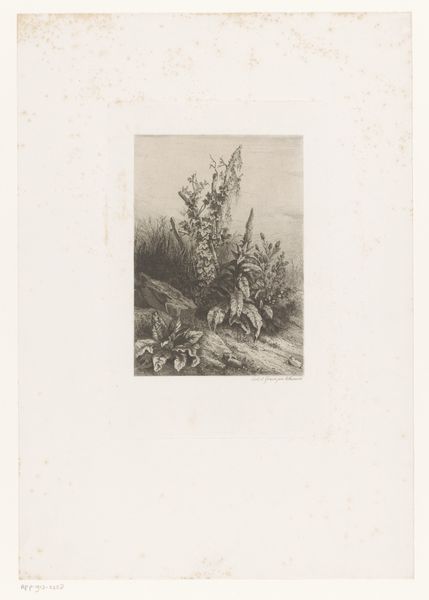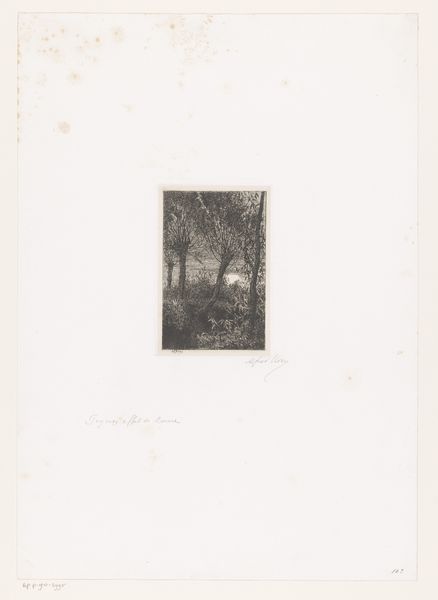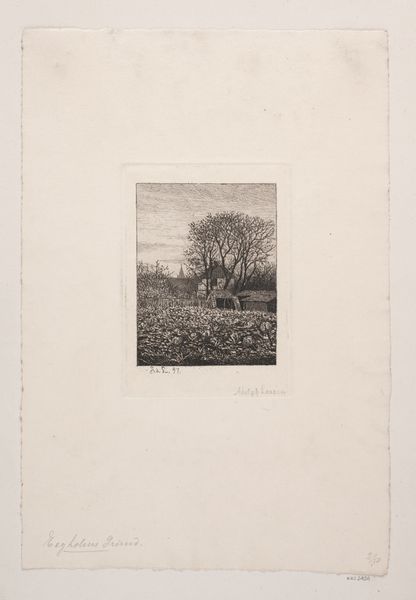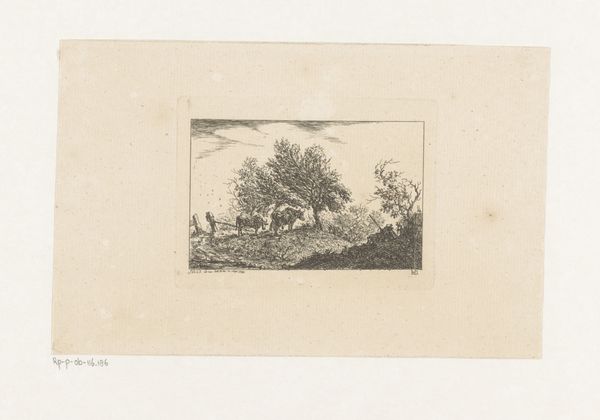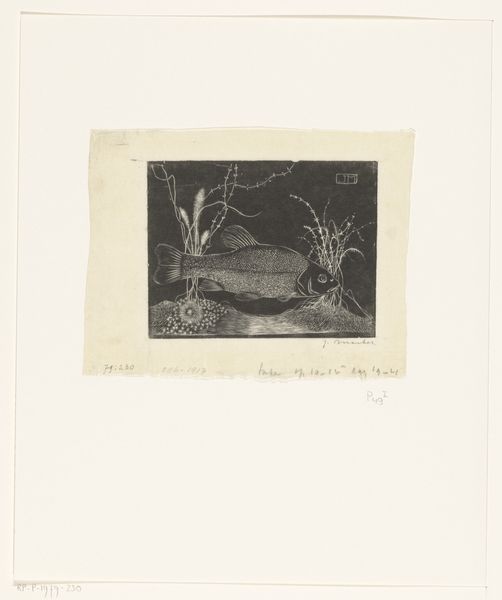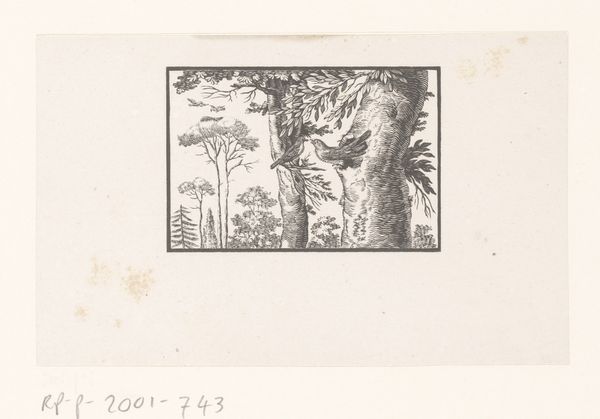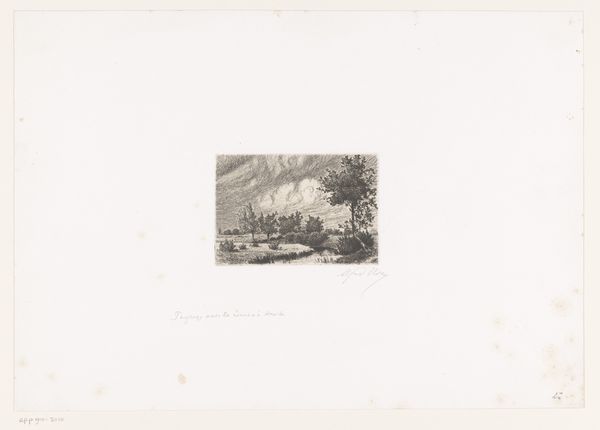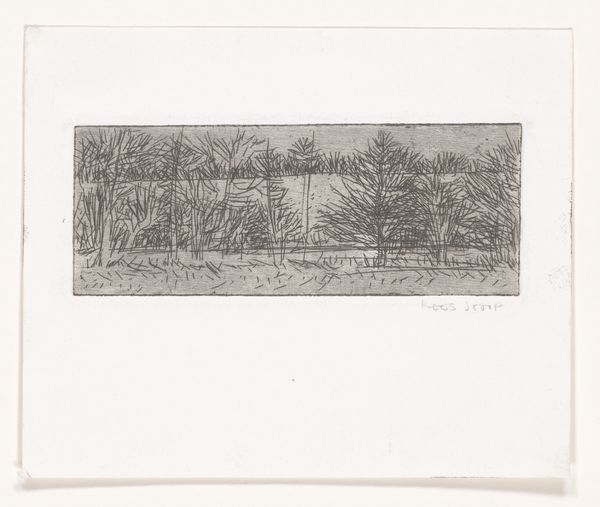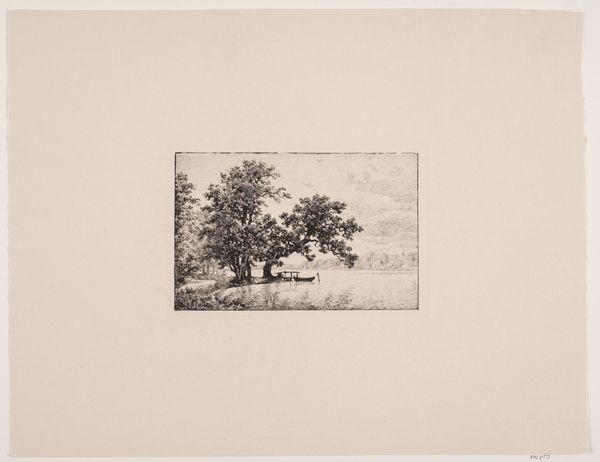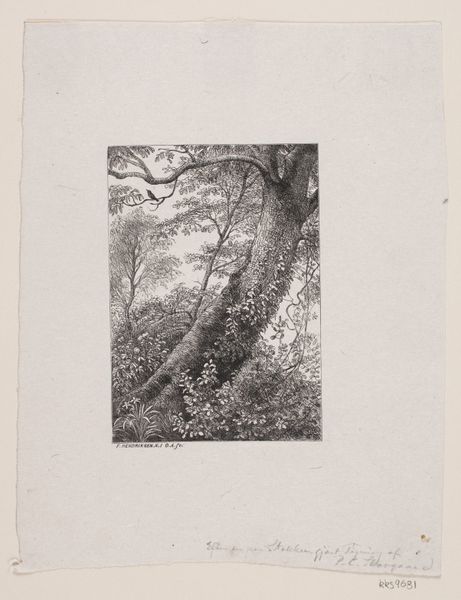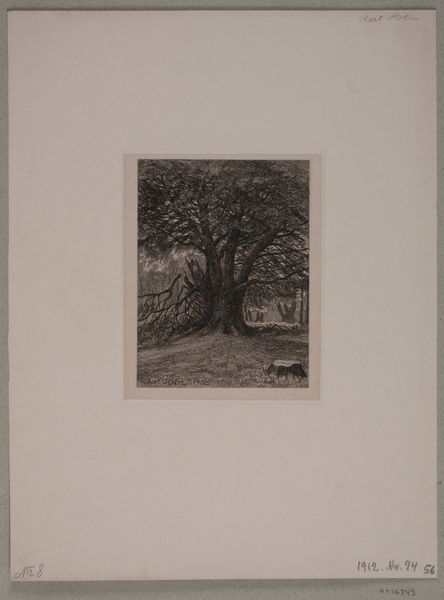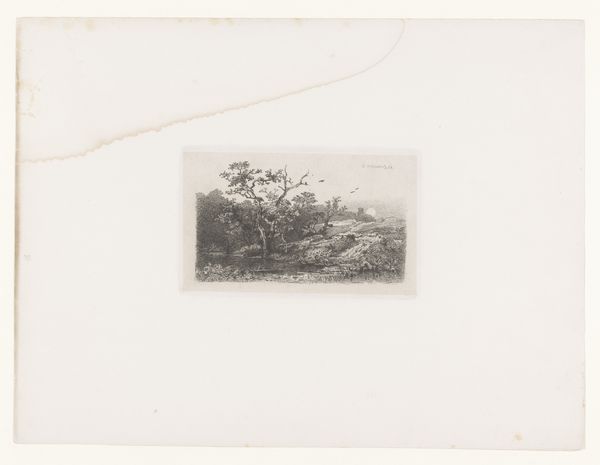
print, etching
# print
#
etching
#
landscape
#
figuration
#
monochrome
Dimensions: height 135 mm, width 120 mm, height 36 mm, width 50 mm
Copyright: Rijks Museum: Open Domain
Editor: This is "Stengels" by Kees Stoop, a print – specifically an etching – made sometime between 1944 and 1990. The close-up landscape is so intricate for such a small-scale work. What do you see in this piece? Curator: I see a work that invites us to consider the intersection of nature and representation, particularly within the context of post-war Dutch art. Stoop's choice of a common landscape subject, 'Stengels' which translates to stalks or stems, prompts a deeper investigation into how we assign meaning to the everyday. Considering the social and political climate of the mid to late 20th century, could this depiction of seemingly simple plant life be a subtle commentary on resilience and growth amidst upheaval? How does the medium itself – etching, with its detailed and somewhat laborious process – contribute to this interpretation? Editor: That’s fascinating. I hadn't considered the post-war context. The intricacy of the etching does emphasize the detailed, almost obsessive, focus on the stems themselves. Do you think the fact that it’s monochrome has any significance? Curator: Absolutely. The monochrome palette encourages us to look beyond surface-level aesthetics. The absence of colour allows the texture and form of the 'Stengels' to take center stage, perhaps echoing the stripped-down realities of the post-war era, where resources and perspectives may have been limited, and survival was about focusing on what's essential. It almost feels like a call for sustainability. Does the visual hierarchy in this work suggest power relations within nature? Editor: I suppose so, the stems are prominent and upright in the landscape. I never really thought of art being linked so deeply to politics or activism, but this really changes how I look at art. Curator: Precisely. Art, in its most potent form, initiates a dialogue. Exploring diverse layers fosters an enlightened perception that makes visual interpretation so powerful.
Comments
No comments
Be the first to comment and join the conversation on the ultimate creative platform.
